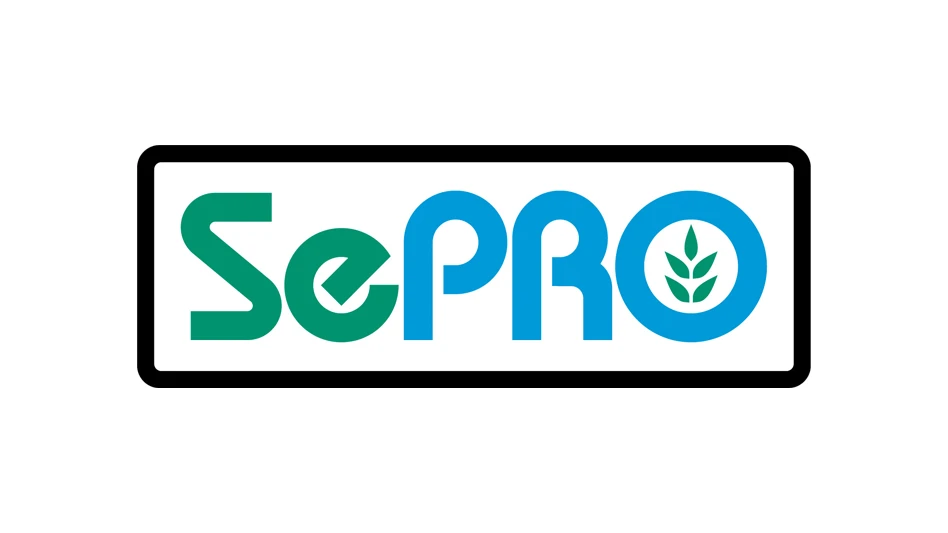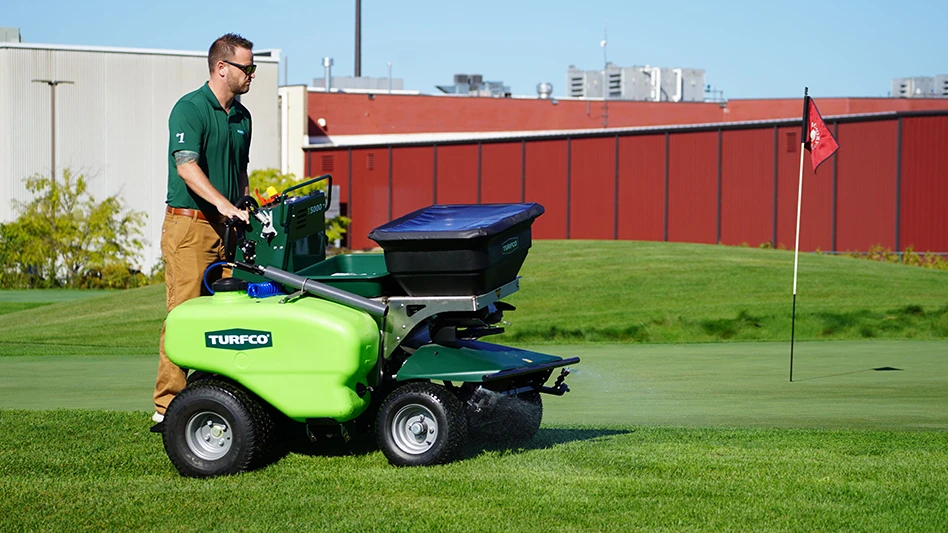The current economic downturn is pressuring golf course superintendents to scrutinize all maintenance operations to improve efficiency. Because labor represents the largest part of a maintenance budget, it’s often targeted for reductions.
“Staff reductions range from 10 to 30 percent, with even more cuts possible later this year,” says Larry Gilhuly, director of the Northwest region for the USGA Green Section. “Superintendents may need to look at a complete change in management philosophy, and that’s not easily done.”
Gilhuly has visited hundreds of golf courses throughout the Pacific Northwest and Hawaii, providing advice and guidance through the USGA Green Section’s Turf Advisory Service. Hawaii seems especially hard hit by the reduction in play at resort courses that depend on tourists from the mainland and Japan. Facilities on the islands are using an alternative type of maintenance called section maintenance successfully, Gilhuly reports. He believes section maintenance is an excellent option to improve efficiency, create better playing conditions and, in some cases, reduce maintenance costs. Converting from a conventional maintenance operation to section maintenance is a practice Gilhuly has been promoting for years since he first wrote about it in the USGA Green Section Record in 1991.
Maintenance methods among superintendents vary widely, and it’s almost impossible to say there’s a universal system everyone should use. Superintendents who use all or part of the section maintenance concept are often surprised more superintendents don’t implement the practice.
The core idea of section maintenance focuses on individual responsibility, accountability, efficiency and a more astute attention to detail. A significant difference between conventional maintenance and section maintenance is how tasks are assigned and carried out. Conventional maintenance assigns a task to an individual that must be completed throughout an entire golf course. Section maintenance assigns an employee multiple tasks to be completed in a limited area or section. Many superintendents use varying combinations of both methods, but there are fewer that use section maintenance as their primary form of maintenance.
Born out of frustration
Located just outside the city limits of Asheville, N.C., the Biltmore Forest Country Club is rated one of the top courses in the state. One thing that makes Biltmore Forest unique is the money it doesn’t spend maintaining the course. Even though the club has the means to spend more, Bill Samuels, CGCS, holds the purse strings. He believes section maintenance is the most effective, cost-efficient method to maintain a golf course to achieve the high-quality results worthy of a high-end private club.
Samuels doesn’t remember how, or exactly why, he started using section maintenance. But he does know it was born out of frustration with the lack of accountability in maintenance and evolved throughout time.
“I started experimenting with different ways to improve maintenance efficiency in 1993 and found my staff morale improved and maintenance costs could be decreased by about 30 percent using section maintenance,” he says. “I’m surprise more superintendents aren’t using this method.”
While experimenting with ways to improve efficiency, Samuels found it took too many people to complete a job.
“I would send three people out to do a job only to find it wasn’t done properly,” he says. “I couldn’t tell who was performing at a low level.”
Biltmore Forest’s staff consists of 12 full-time and two part-time workers. The full-time staff is divided into five categories:
- Section team – seven people
- Mechanic – one person
- Assistant superintendent – one person
- Rough and fairway mowing – two people
- All-purpose rover – one person.
Each section team member is given three holes (includes practice areas) and a personal equipment inventory that consists of:
- A work vehicle for hauling and transportation;
- A Jacobsen 22-inch walk-behind greensmower;
- A Jacobsen 22-inch walk-behind tee, collar and approach mower;
- An Allen hover mower with a Honda four-stroke engine;
- A Stihl leaf blower;
- A Shindaiwa power string trimmer;
- A Honda push rotary mower for trimming around greens and tees; and
- Various hand tools for raking bunkers and other light maintenance.
Rough and fairway mowing is a daily operation using a Toro 4500, 5400 and 5510. On days when one of the section team members is off or sick, the rover and other team members pick up the slack. The staff meets early every morning to review the day’s work schedule and prepare for the occasional special event. Table 1 at the right shows the tasks and assignments for a typical week. The staff members are familiar with the routine that needs to be completed before the golfers arrive and have become proficient at staying out of their way. It takes time, experience and training, but Samuels says the members are pleased with the form of maintenance and interruptions haven’t been an issue.
Better detail work
Another superintendent that espouses the benefits of section maintenance is Steve Kealy, CGCS, at the private, 18-hole Glendale Country Club in Bellevue, Wash. Kealy has been using his tailored maintenance program for about 10 years. For him, the advantages of section maintenance include pride in ownership, attention to detail, healthy competition and improved employee accountability.
“I found details – such as cleaning bathrooms, edging ball washer stands, trimming and cleaning out the bottom of garbage cans – were missed regularly, and conditions weren’t meeting my expectations,” he says.
Kealy uses a slightly different work schedule with his full-time staff of 14 and seasonal staff of 10, but the philosophy is similar to Biltmore Forest’s (see Table 2 on page 64). Kealy gives each of the five section members a comparable area in terms of time and workload. Workers balance an equal numbers of greens, bunkers, trimming areas and tasks.
Results and cost savings
Developing a section maintenance program requires acquiring tools and equipment. Each crew member needs a stable of equipment, and it may take several years to build the inventory. But once built, the benefits of section maintenance can be seen in many areas of the golf course operation.
At Biltmore Forest, the average age of the Jacobsen greensmowers is 20 years and is a testament to the individual care each crew member gives to the machines. Biltmore and Glendale have low staff turnover and a high level of experience among crew members. Glendale has a combined 63 years of experience among its five crew members.
Maintenance budgets can be reduced using section maintenance, too.
“I would be spending at least 30 percent more if I used the old method I used to use,” says Samuels, who describes his operation as lean and mean with the benefits of an immaculately maintained golf course worthy of praise.
Kealy, rather, focuses more on the results he can achieve rather than a cost savings between the two forms of maintenance.
Trust in others’ performance
The increasing demands on a superintendent to maintain excellent conditions while reducing maintenance costs is a stiff challenge. Maintenance operations require constant evaluation of staff performance and accountability. Delegating responsibility and demanding accountability is just one of the advantages of section maintenance. The flaw of many superintendents and the primary reason for job burnout is adopting the axiom, “If you want something done right, do it yourself.”
Developing a performance level you can trust, resulting in high morale and accountability, is one way to reduce a superintendent’s stress level and achieve employee satisfaction. Section maintenance deserves a closer look for maintenance programs and may be an excellent way to achieve goals set for the year.
Jim Connolly, a former USGA agronomist, is president of JCC, a Spokane, Wash.-based consulting firm.

Explore the February 2009 Issue
Check out more from this issue and find your next story to read.
Latest from Golf Course Industry
- Atlanta Athletic Club approves funding for master plan
- Maximizing Cultural Practices and Agronomic Benefits with Minimal Surface Disruption
- Real Answers about Spray Nozzle Choices
- From the Course to the Factory: How Customer Insights Drive Innovation
- New & Proven Enzyme Strategies for Sprayable Thatch Management
- Innovating Tomorrow: Wittek’s New Products & Industry Staples
- PBI-Gordon introduces new field development team
- The Cabot Collection announces move into course management






